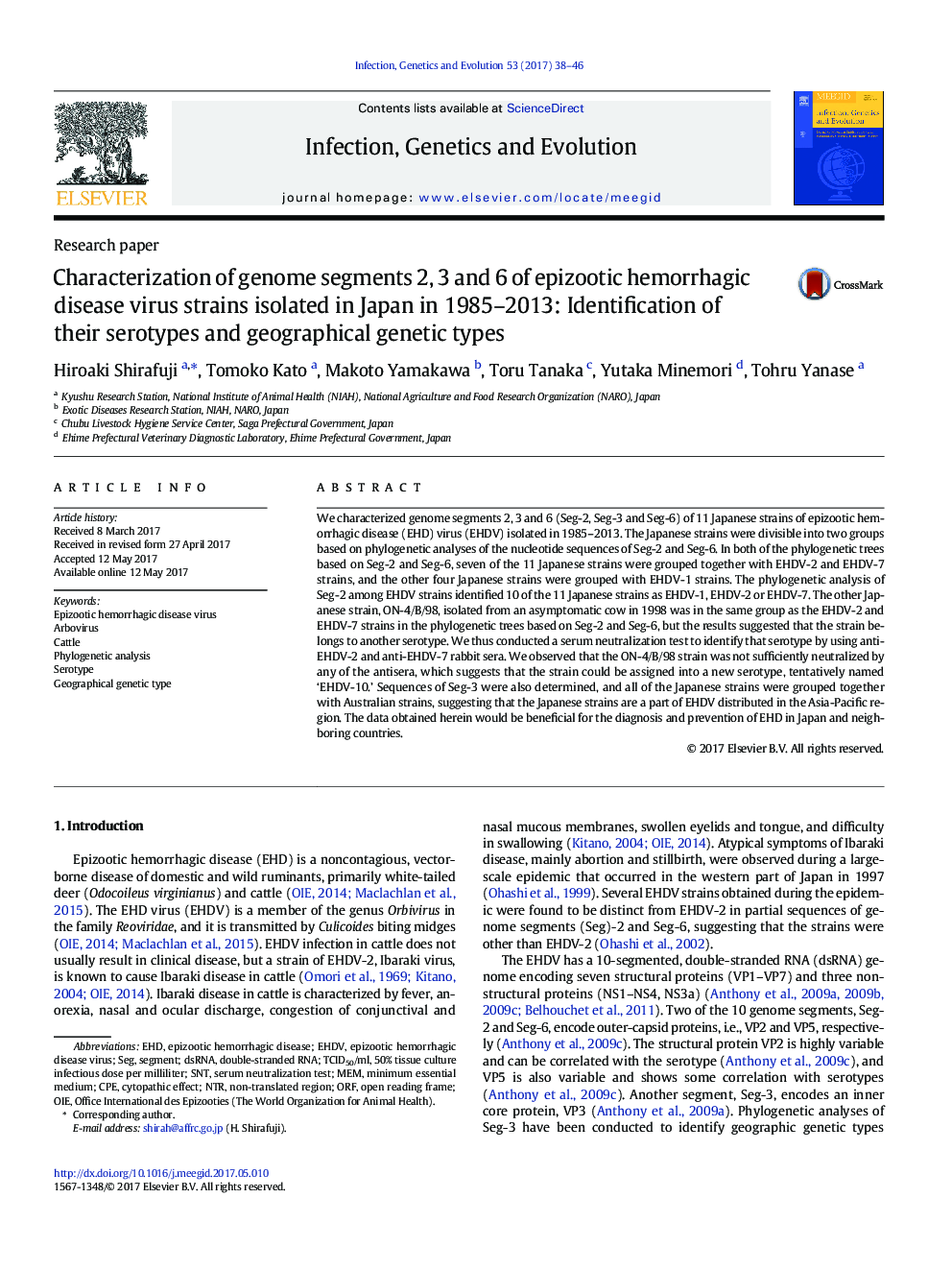| Article ID | Journal | Published Year | Pages | File Type |
|---|---|---|---|---|
| 5590659 | Infection, Genetics and Evolution | 2017 | 9 Pages |
Abstract
We characterized genome segments 2, 3 and 6 (Seg-2, Seg-3 and Seg-6) of 11 Japanese strains of epizootic hemorrhagic disease (EHD) virus (EHDV) isolated in 1985-2013. The Japanese strains were divisible into two groups based on phylogenetic analyses of the nucleotide sequences of Seg-2 and Seg-6. In both of the phylogenetic trees based on Seg-2 and Seg-6, seven of the 11 Japanese strains were grouped together with EHDV-2 and EHDV-7 strains, and the other four Japanese strains were grouped with EHDV-1 strains. The phylogenetic analysis of Seg-2 among EHDV strains identified 10 of the 11 Japanese strains as EHDV-1, EHDV-2 or EHDV-7. The other Japanese strain, ON-4/B/98, isolated from an asymptomatic cow in 1998 was in the same group as the EHDV-2 and EHDV-7 strains in the phylogenetic trees based on Seg-2 and Seg-6, but the results suggested that the strain belongs to another serotype. We thus conducted a serum neutralization test to identify that serotype by using anti-EHDV-2 and anti-EHDV-7 rabbit sera. We observed that the ON-4/B/98 strain was not sufficiently neutralized by any of the antisera, which suggests that the strain could be assigned into a new serotype, tentatively named 'EHDV-10.' Sequences of Seg-3 were also determined, and all of the Japanese strains were grouped together with Australian strains, suggesting that the Japanese strains are a part of EHDV distributed in the Asia-Pacific region. The data obtained herein would be beneficial for the diagnosis and prevention of EHD in Japan and neighboring countries.
Keywords
Related Topics
Life Sciences
Agricultural and Biological Sciences
Ecology, Evolution, Behavior and Systematics
Authors
Hiroaki Shirafuji, Tomoko Kato, Makoto Yamakawa, Toru Tanaka, Yutaka Minemori, Tohru Yanase,
